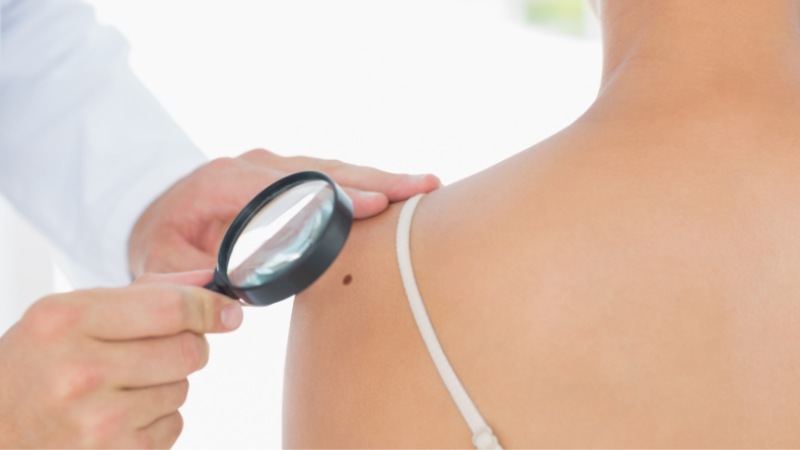Skin cancer is the most prevalent cancer in the United States with more than 60,000 cases each year, according to the Skin Cancer Foundation. Skin cancer is defined as the abnormal growth of skin cells, and it often forms on skin that is overexposed to the sun or other sources of ultraviolet (UV) light, such as tanning beds or sunlamps. Skin cancer can also occur on parts of the body not commonly exposed to sunlight or artificial UV light.
cases each year, according to the Skin Cancer Foundation. Skin cancer is defined as the abnormal growth of skin cells, and it often forms on skin that is overexposed to the sun or other sources of ultraviolet (UV) light, such as tanning beds or sunlamps. Skin cancer can also occur on parts of the body not commonly exposed to sunlight or artificial UV light.
Melanoma is the most serious form of skin cancer because of its likelihood to spread to other parts of the body. Melanoma forms in the melanocytes, which are the cells that produce melanin and give the skin color. While the exact cause of melanoma isn’t clear, overexposure to UV light can cause melanocytes to cluster and form pink, tan, or brown moles. If these moles begin to change their appearance, they may be cancerous.
Early detection is crucial for catching skin cancer early, while its still in its most treatable phase. It is important that you routinely check your own skin for changes with a self-exam. These changes in the skin could be a new growth, a mole that changes in size or shape, and a sore that doesn’t heal.
Utilizing “ABCDE” is a helpful way to remember the warning signs of melanoma:
- Asymmetrical: Is the mole irregular in shape?
- Border: Is the mole smooth or jagged or blurred?
- Color: Is there uneven coloring across the mole?
- Diameter: Is the mole larger than 6mm or the size of a pea?
- Evolving: Is the mole changing size, shape, or color during the past weeks or months?
Anyone can get skin cancer, but people who have a family history of skin cancer, have a naturally lighter skin color, or are of older age are at a greater risk. Reducing your exposure to UV light can help lower your chances of developing skin cancer, regardless of whether you have specific characteristics that put you at an increased risk.
Some preventative measures you can take to reduce your risk of skin cancer are:
- Applying a broad-spectrum sunscreen with an SPF of 15 or higher before going outdoors.
- Re-applying sunscreen every two hours, especially after swimming or sweating.
- Wearing protective clothing and hats when outdoors.
- Avoiding sunlight between 10 a.m. and 4 p.m., where UV light is the strongest.
- Performing a skin cancer self-exam monthly.
It’s important to note that not all skin cancers look the same. If you believe you have a suspicious mole on your skin, be sure to have it examined by your primary care physician or dermatologist.